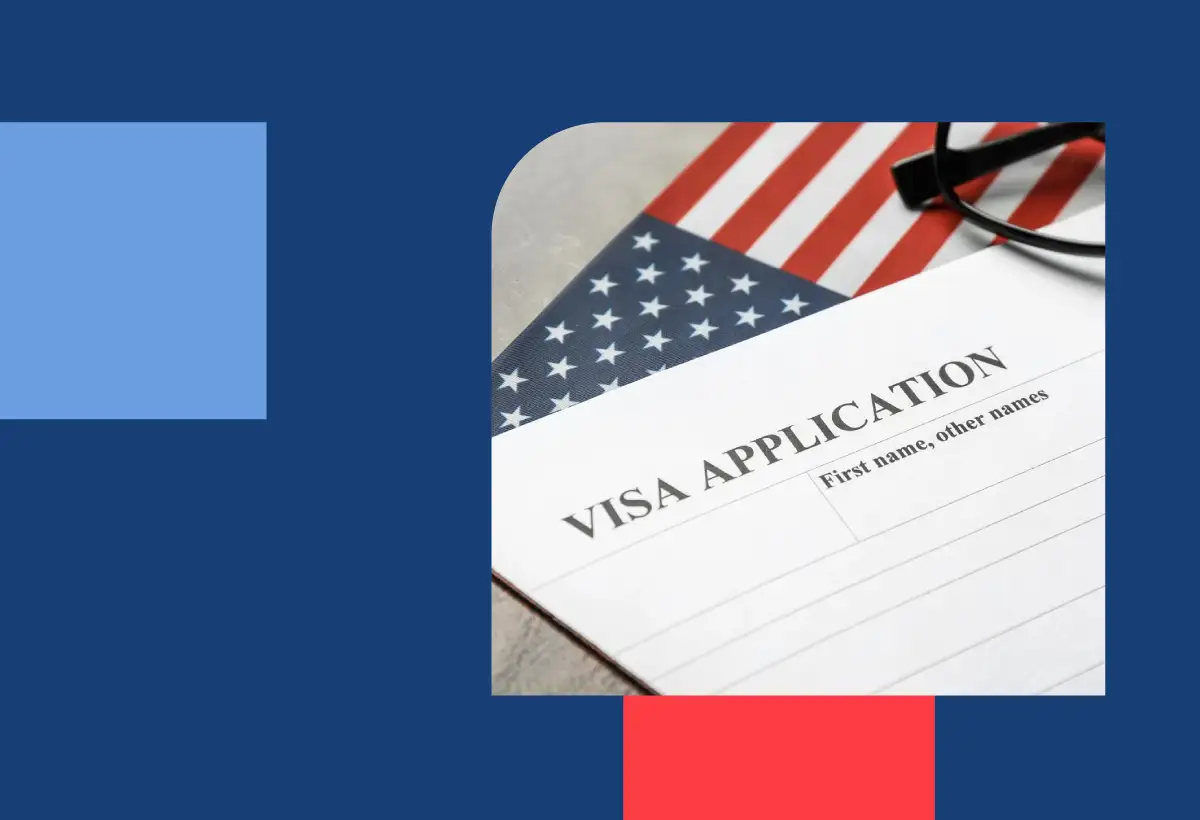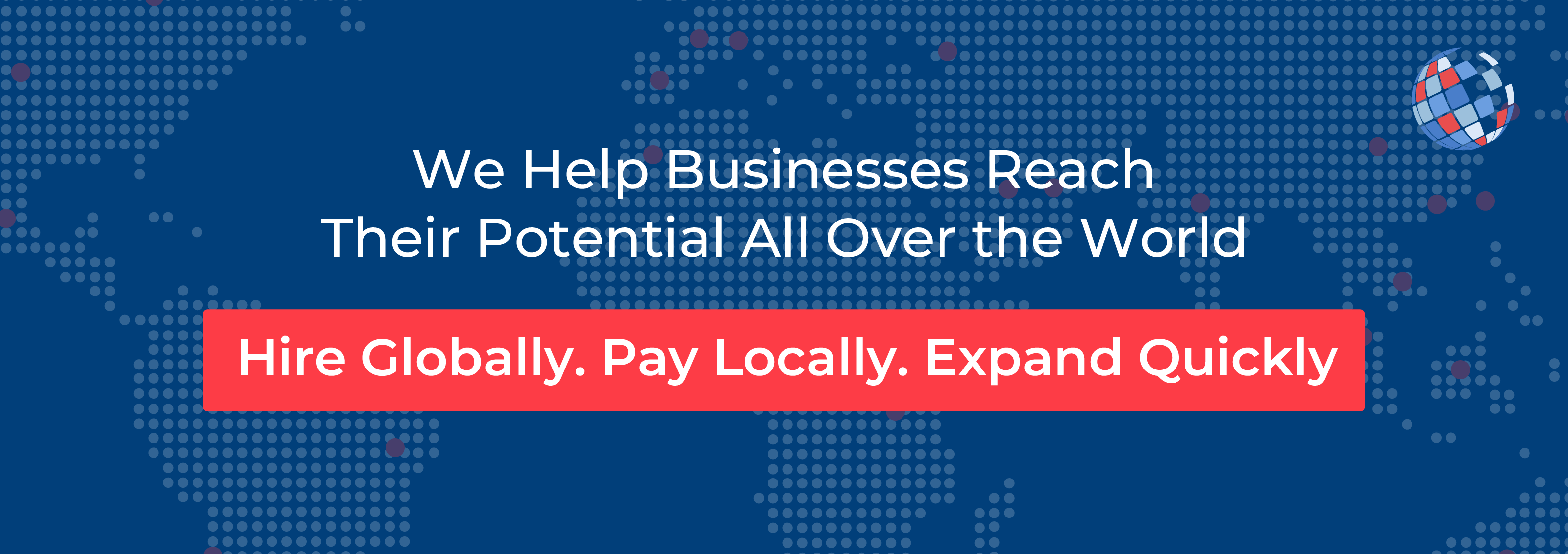The H-1B visa has long been one of the most important tools for companies seeking to hire skilled international talent in the US. For employers competing in tech, engineering, biotech, and other knowledge-driven industries in particular, bringing in top talent from around the world often depends on successfully navigating the H-1B process. But with the Trump administration back in power, immigration is once again at the forefront of policy discussions, and that includes changes to skilled work visas like the H-1B.
This means that in 2025 and beyond, employers should expect higher costs, tighter restrictions, and closer scrutiny of petitions. Fortunately, companies have more options than ever to access global talent without bearing the cost and risk of H-1B sponsorship. In this article, we’ll break down what you need to know about Trump’s H-1B cost changes and explore practical, cost-effective hiring alternatives including hiring skilled workers directly in other countries like China and India.
What Has Trump Announced for the H-1B Visa?
In September 2025, Trump and the White House announced a range of changes to be made to the H-1B Visa and application process. Most of these changes relate to eligibility and cost, and employers should be aware of these changes if considering bringing workers into the US via this method:
- Immigration officials have been advised to further restrict the number of H-1B visas approved.
- A $100,000 fee is now required for all new H-1B petitions filed after Sept 21, 2025 (one-time, not annual).
- There is no impact on renewals or current H-1B holders re-entering the US on valid visas.
- Changes apply mainly to applicants currently outside the US seeking new H-1B status.
- National interest exemptions are available on a case-by-case basis.
- Further planned rule changes will raise prevailing wage levels and prioritize higher-paid workers in the H-1B lottery.
Understanding the True Cost of H-1B Sponsorship
Uncertainty around visa issues is a global concern, but recent variability in terms of US policy have made many employers reconsider the true cost of sending employees or setting up in the US. INS Global has already recently looked at the potential costs and benefits of Trump’s previous Gold Card policy idea, but this change to the H-1B visa looks set to affect many more companies.
Even before any policy changes, H-1B sponsorship is far from cheap. When you account for filing fees, legal work, and compliance requirements, the previous total cost per sponsored employee could easily exceed $8,000–$10,000, and that’s before considering indirect costs like delays and risk of rejection.
Here’s a closer look at the main cost components:
Cost Component | Typical Amount (USD) | Notes |
USCIS Filing Fee | $460 | Mandatory |
ACWIA Training Fee | $750–$1,500 | Depends on company size |
Fraud Prevention Fee | $500 | Mandatory for initial petition |
Public Law Fee (50+ Employees) | $4,000 | Applies to H-1B dependent employers |
Premium Processing (Optional) | $2,805 | Speeds up decision to 15 days |
Legal/Attorney Fees | $2,000–$4,000 | Preparation, compliance, and documentation |
Total Estimated Cost | $8,500–$12,000+ | Per employee, per filing cycle |
For companies sponsoring multiple employees, especially startups or SMEs, these costs add up quickly.
Compliance and Administration Costs
Beyond filing fees, employers are responsible for:
- Tracking wage requirements and providing prevailing wage documentation
- Maintaining public access files for each H-1B employee
- Preparing for potential Department of Labor audits
These administrative burdens consume HR time and increase the risk of costly compliance mistakes.
Opportunity Cost: The H-1B Lottery Problem
Even after paying the fees and preparing the petition, there’s still no guarantee of approval. In fact, the annual H-1B cap (85,000 visas total) is oversubscribed almost every year. In 2024, it was believed that 470,000 visas applications were processed successfully before then being put into the lottery based system, meaning many employers face delays or denials that can derail critical projects if timing is a factor.
While the new cost factor will likely quickly diminish the waiting list, employers will have to weigh the pros and cons of such a large investment that may still not guarantee immediate success.
Why Employers Are Looking Beyond H-1Bs
Given the rising costs and unpredictability, employers are exploring alternatives to traditional visa sponsorship. The big trends driving this shift are:
- Talent Shortages and Time-to-Hire Pressure
Delays caused by the H-1B process can slow down product launches or service delivery, putting companies at a competitive disadvantage. - Remote-First Workforce Models
Since the pandemic, more companies have embraced distributed teams. If employees can work from anywhere, why force relocation into an expensive and risky process when more low-cost or spread out locations are equally valid? - Policy Volatility
Changes in immigration policy including potential fee hikes under Trump make it hard for employers to forecast costs and staffing levels.
For many companies, the solution is to hire talent where they are, rather than bring them to the US.
Alternative 1 – Hire Workers in China for US Companies and Avoid US Skilled Visa Costs
China remains one of the most attractive markets for talent acquisition today, particularly for companies in tech, manufacturing, and R&D. Instead of going through the H-1B process to bring Chinese engineers or researchers to the US, many companies are now hiring them directly in China and integrating them into global teams.
China’s K Visa for Global Talent
China’s new K-Visa, launching October 1, 2025, is designed to attract foreign, young STEM professionals more flexibly and with fewer administrative hurdles than many of the country’s more traditional work visas.
Key differences from the US H-1B include:
- Under China’s K, no requirement for an employer or institution sponsor/invitation, which means individuals can apply without first lining up a job offer.
- K‐Visa holders are permitted to engage not just in employment, but also in academic research, education, exchanges, technology/cultural/entrepreneurial activities.
- China’s K Visa also allows multiple entries, longer validity periods, and more flexible duration of stay compared to standard visas.
By contrast, the US H-1B visa is an employer-sponsored visa, so a US company must file a petition on behalf of the foreign worker, the job must qualify as a “specialty occupation” (generally requiring a bachelor’s degree or equivalent).
Finally, the number of new H-1Bs being constrained by annual caps plus lottery-based selection when demand exceeds supply is not an issue as the K visa does not currently have a maximum number per year.
Advantages of Hiring in China Instead of Sponsoring Visas in the US
- Cost Savings – Local salaries for skilled workers in China are often significantly lower than in the US, even after adding benefits and employer taxes.
- Speed – Hiring locally allows companies to onboard in weeks rather than waiting months for a visa lottery outcome.
- Risk Reduction – Less need to worry about visa denials based on snap policy decisions, renewals, or travel restrictions.
Alternative 2 – Hire Workers in India for US Companies and Reduce Visa-Related Risks
India is another critical talent hub that benefits greatly from a large population and world-class education, with an established global presence particularly in IT services, software engineering, and finance. US companies have long relied on H-1B visas to bring Indian professionals to the US, but with higher visa fees and stricter scrutiny many are finding it more cost-effective to simply build remote teams in India.
Benefits of Hiring in India Without H-1B Sponsorship
- Scalable Access to Talent – India produces more engineering graduates annually than any other country.
- 24/7 Operations – Indian teams can provide overnight coverage thanks to big time zone differences, speeding up global service delivery.
- Flexibility – No need to relocate employees or deal with dependent visas for family members when hiring locally.
By working with an EOR like INS Global, US companies can even hire Indian employees compliantly without setting up a subsidiary, taking care of payroll, taxes, and statutory benefits under Indian labor law.
Other H-1B Visa Alternatives for Employers
If hiring abroad or relocating employees to another country isn’t your preferred approach, there are still several viable ways to fill critical talent gaps while avoiding the rising costs and risks of H-1B sponsorship. Each option has its own benefits and considerations, depending on your company’s size, budget, and long-term strategy.
Nearshoring Teams
For US-based companies, nearshoring offers a cost-effective middle ground between onshore and fully offshore hiring.
- Popular Destinations – Mexico, Costa Rica, Colombia, and Canada have become top locations for nearshored teams in US companies or others with required operations in the US thanks to geographic proximity and overlapping time zones.
- Advantages:
- Easier collaboration with US-based teams or partners due to similar work hours
- Lower travel costs for on-site visits compared to overseas locations
- Access to highly educated, English-speaking talent pools
- Significantly lower local salary ranges or employment costs
- Considerations – Nearshoring still requires compliance with local labor laws, so if you don’t have a legal entity in the country, using an EOR or PEO partner is usually the simplest way to stay compliant while building a team.
Short-Term Project Assignments
Sometimes, you just need a specialist on-site in the US for a few weeks or months to get a project over the finish line. IN which cases, alternatives are available:
- B-1 Business Visa – This visa allows foreign employees to attend meetings, training, or negotiate contracts in the US. However, B-1 holders cannot perform productive work, so this is best for temporary knowledge transfer or oversight roles.
- L-1 Intracompany Transfer – If you already have operations abroad, you can transfer a manager, executive, or specialized-knowledge employee to the US under the L-1 visa category. This can be faster than the H-1B route and does not have an annual cap, though the limited positions this affects can be an issue.
Compliance Note: Immigration authorities closely monitor the misuse of short-term visas, so working with experienced legal counsel that understands mobility compliance can help reduce the risk of fines or bans.
Green Card Sponsorship
For employees who are critical to your company’s long-term growth, sponsoring a Green Card may be a worthwhile investment.
- Advantages:
- Provides employees with permanent resident status, reducing turnover risk
- Allows greater job flexibility compared to H-1B visa holders
- Considerations:
- Can take several years to process
- Requires strict adherence to Department of Labor regulations, including prevailing wage determinations and recruitment efforts
Green Card sponsorship is usually most effective for highly specialized employees or senior leaders you want to retain indefinitely. Due to the cost and highly involved processes it requires, it may not be suitable in every case.
Global EOR Model
When you want the speed and flexibility of hiring international talent without committing to setting up a local subsidiary, the Employer of Record model is the most straightforward solution.
- How It Works – The EOR becomes the legal employer in the country of hire, handling payroll, taxes, and compliance. Your company maintains full control over the employee’s tasks and performance.
- Key Benefits:
- No need to open a local entity
- Quick onboarding, often in just a few weeks
- Low legal risk, as the EOR assumes employment compliance responsibility
- Best Use Cases – Hiring first employees in a new market, project-based expansion, or testing a new location before fully investing.
How EOR Services Simplify Global Hiring
The Employer of Record (EOR) model is designed to take the complexity out of international hiring by handing over responsibility for key legal employer functions over to local professionals. This makes it easy for companies of all sizes to expand their talent reach without expensive infrastructure or requiring deep local administrative knowledge.
Why EOR Is a Game-Changer for Employers
Traditionally, hiring abroad required setting up a legal entity which required a process that can take months, require tens of thousands of dollars in legal and administrative fees, and create ongoing compliance obligations. EOR services bypass these barriers entirely, allowing you to hire quickly and compliantly.
When you work with INS Global as your EOR partner:
- We Hire the Employee on Your Behalf – The worker is officially employed by INS Global under local labor law, eliminating your risk of misclassification.
- We Handle Payroll and Compliance – From tax withholding to statutory contributions, we ensure every pay check meets local legal requirements.
- We Manage Benefits – Health insurance, social security, pensions are taken care alongside any other of mandatory and optional benefits so your employees feel supported.
- You Stay in Control – You direct the employee’s daily tasks, integrate them into your company culture, and measure their performance just like any other team member.
Key Advantages of EOR Hiring
- Speed – Get talent onboarded in weeks, not months.
- Cost Efficiency – Pay only for the employees you hire, meaning no need for large upfront investments.
- Scalability – Add or remove employees as your business needs evolve.
- Risk Mitigation – Avoid fines and penalties related to employment misclassification or payroll errors.
Real-World Impact
One US-based fintech company needed to quickly hire two software developers in Canada after failing to secure H-1B visas. Using INS Global’s EOR solution:
- They had contracts issued and employees onboarded in less than a month.
- Their HR team avoided the cost and delay of establishing a Canadian subsidiary.
- The employees integrated seamlessly into the US development team via remote collaboration tools.
This ability to act quickly and stay compliant gave them a competitive edge in meeting their product launch deadlines.
Choosing the Right Hiring Strategy for 2025
The right solution depends on your company’s goals:
- Need to relocate a key executive? H-1B or L-1 sponsorship may still make sense.
- Need to scale a development team quickly? Hiring abroad via EOR is faster and cheaper.
- Want long-term retention of international employees? Consider Green Card sponsorship as a future step.
In many cases, the best approach is hybrid. This might mean combining limited visa sponsorship for essential staff with remote hiring for the rest of your team and allowing your team to grow naturally according to your needs, rather than tackle everything head-on from the beginning.
Factor | H-1B Sponsorship | EOR Hiring (via INS Global) | Local Entity Setup |
Initial Setup Cost | $8,500–$12,000+ in fees (per employee) | $0 (pay-as-you-go service) | $15,000–$50,000+ (legal + registration fees, plus on-the-ground expenses) |
Legal/Admin Burden | High – requires attorneys, HR compliance, public access file | Low – INS Global handles compliance, payroll, benefits | High – ongoing corporate compliance, tax filings, HR setup |
Time to Hire | 3–6 months (lottery + processing delays) | 2–4 weeks (depending on country) | 3–12 months (entity registration + setup) |
Risk of Rejection | High – subject to lottery cap and USCIS scrutiny | None – hire directly under local labor law | None (once entity is established) |
Flexibility | Low – employee tied to visa status and US location | High – hire, scale, or exit easily | Medium – closing an entity can be expensive |
Best For | Key employees who must work in the US physically | Fast, low-risk hiring of global talent | Large-scale, permanent market entry |
Conclusion: Build Your Global Workforce Without the Visa Headache
Trump’s H-1B visa cost increases are just the latest reminder that relying solely on the US immigration system can be expensive and unpredictable.
International employers have more choices than ever. By hiring workers where they live in China, India, or dozens of other countries, you can reduce costs, avoid delays, and access top global talent.
INS Global has helped hundreds of US companies set up distributed teams in over 160 countries. We’ve put out expertise in the hands of expanding businesses around the world, helping them enter new markets and grow organically across a wide of range of industries and locations.
Today, global labor changes are a constant reminder that up-to-date and relevant information may be the difference between smooth local operations and costly noncompliance penalties or project disruptions. So don’t take the risk, talk to one of our experts today and learn how we can help you hire quickly, stay compliant, and avoid the risks of global employment.





SHARE